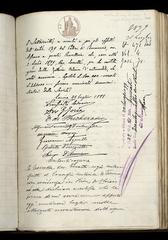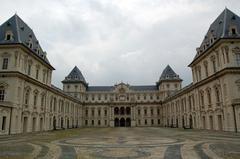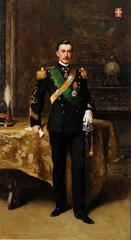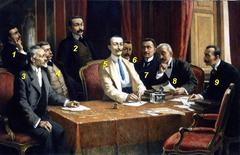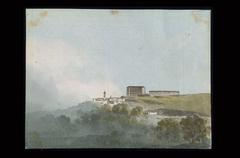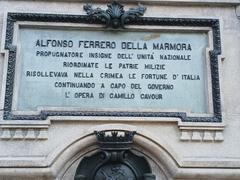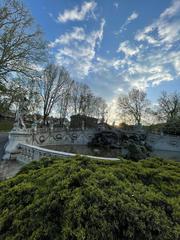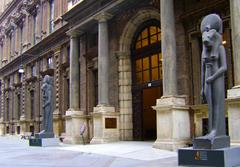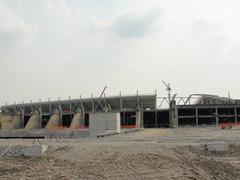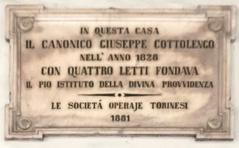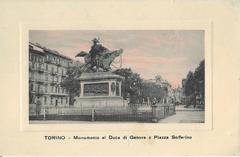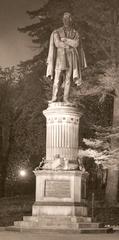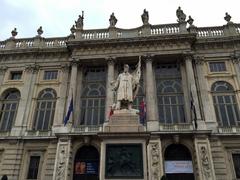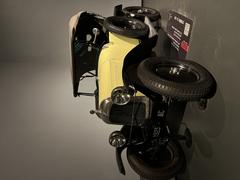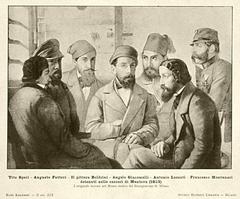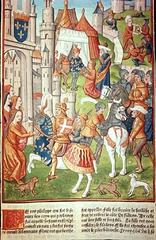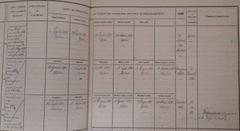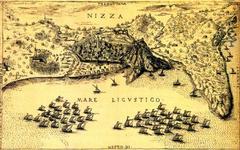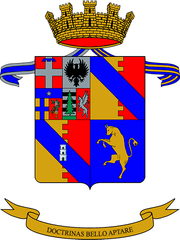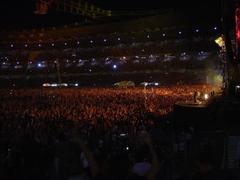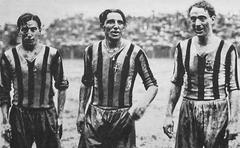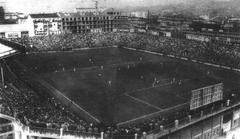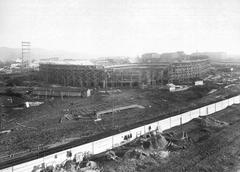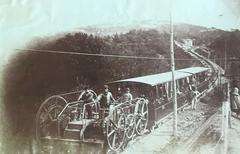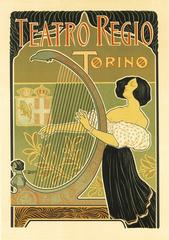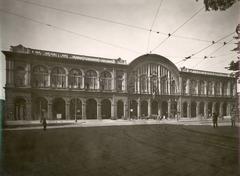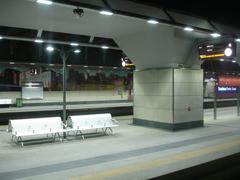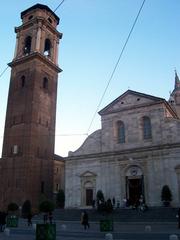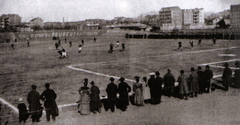Castello Del Drosso Visiting Hours, Tickets, and Comprehensive Guide to Turin’s Hidden Medieval Treasure
Date: 14/06/2025
Introduction
Nestled on the tranquil southern outskirts of Turin, Italy, Castello Del Drosso stands as a unique testament to Piedmont’s layered medieval and Renaissance heritage. From its origins as a fortified Cistercian grange in the 13th century to its later transformation into a noble residence, the castle offers a rare glimpse into the rural and military architecture of northern Italy. Though not as renowned as the Mole Antonelliana or Palazzo Madama, Castello Del Drosso invites visitors seeking an authentic connection to Piedmont’s agrarian, monastic, and aristocratic past. This guide provides a detailed history, insights into architectural and artistic features, practical visitor information, and recommendations for exploring this evocative site.
For official updates and further information, consult resources like the Comune di Torino, Museo Torino, and TravelSetu Turin Tourism.
Table of Contents
- Introduction
- Medieval Origins and Monastic Heritage
- Transformation into a Fortified Noble Residence
- Renaissance and Baroque Reinterpretation
- Wartime Use, Decline, and Modern Challenges
- Architectural and Artistic Value
- Visiting Castello Del Drosso: Hours, Tickets, and Accessibility
- Location, Getting There, and Nearby Attractions
- Visitor Experience and Practical Tips
- Cultural and Educational Importance
- FAQs
- Conclusion
- Sources and Further Reading
Medieval Origins and Monastic Heritage
The story of Castello Del Drosso begins in the early 13th century, when Cistercian monks from the Abbey of Staffarda established a fortified grange (rural monastic farm) on the site (Museo Torino; Parco Piemontese). This grange was strategically located along the old trade route—strada vecchia da Moncalieri a Rivoli—controlling agricultural lands and river crossings on the right bank of the Sangone. The monks developed the Drosso into a hub of agricultural innovation and rural craftsmanship, with activities like tailoring, tanning, milling, and baking supporting both the abbey and local economy.
The site’s spiritual and economic significance made it a focal point in medieval Piedmont. Merchants traveling between Asti and France often passed through the Drosso, sometimes bypassing Turin’s tolls and causing friction with city authorities (Archeocarta). This dual role as a spiritual haven and economic engine set the stage for the castle’s later development.
Transformation into a Fortified Noble Residence
In 1334, financial pressures forced the Abbey of Staffarda to sell the Drosso. It was soon acquired by the Vagnone family, who transformed the monastic complex into a fortified residence (Museo Torino). The current brick quadrangular structure—three stories high with a central courtyard and originally four corner towers—dates from this period. Only two towers remain today, but the overall defensive design is unmistakable, with arrow slits, thick walls, and a layout optimized for surveillance and security.
The castle’s adjacent cascine (farmsteads), including a 13th-century fishbone masonry watchtower, further underscore the integration of agricultural and military functions (Parco Piemontese). The structure’s robust medieval masonry and rural setting distinguish it from Turin’s grand city palaces.
Renaissance and Baroque Reinterpretation
By the 16th century, as Piedmont entered a period of relative stability, Castello Del Drosso’s role shifted from fortress to noble residence. In 1539, Count Guglielmo Gromis di Trana reunited the estate, and the castle saw enhancements reflecting Renaissance tastes (Golosulliver). Ornate fireplaces, larger arched windows, and refined interior finishes were introduced, though the exterior retained its medieval character.
The 18th and 19th centuries brought further changes, including the addition of a landscaped park (circa 2,000 square meters) and a chapel in the “alfieriano” neoclassical style, inspired by architect Vittorio Alfieri. These features highlight the castle’s evolution into a country villa for the Piedmontese nobility, while maintaining its connection to the rural landscape.
Wartime Use, Decline, and Modern Challenges
During World War II, the castle was requisitioned by the German army as the “Torino Sud” command headquarters. Evidence of this period remains in the form of murals and graffiti on the first floor (Lorena Durante). After the war, the castle fell into neglect and partial ruin. Hidden behind modern developments and accessible only via private roads, Castello Del Drosso is little known even among locals (Sharryland). This isolation, however, has helped preserve much of its original fabric.
Architectural and Artistic Value
Castello Del Drosso is a rare survivor of Piedmont’s rural fortifications. Its square plan, exposed brick construction, and remaining towers showcase medieval defensive strategies. Interior features, such as vaulted ceilings and stone fireplaces, bear witness to centuries of adaptation. The alfieriano chapel and landscaped park, added in later centuries, reflect changing tastes and the castle’s enduring role as a residence of distinction (Museo Torino; Parco Piemontese).
The surrounding cascine and historic agricultural landscape testify to the estate’s dual economic and spiritual legacy. A 1790 census recorded the property at around 300 hectares, underscoring its importance in the region.
Visiting Castello Del Drosso: Hours, Tickets, and Accessibility
Visiting Hours & Tickets
- Regular Access: The castle is privately owned and not open to the public on a regular basis.
- Special Events & Guided Tours: Occasional guided tours and cultural events are organized by local heritage associations or the Turin cultural heritage office. Access during these events is typically by appointment.
- Tickets: There is no standard ticketing system; entry is usually free or subject to a nominal fee during special events or tours. Check local listings and Comune di Torino for the latest information.
Accessibility
- Location: Near Turin’s southern ring road (tangenziale sud), close to the Sangone River in the Mirafiori Sud district.
- Transport: Best reached by car or taxi. Public transport options are limited; the nearest bus stops require a short walk.
- Parking: Limited, plan ahead if arriving by car.
- Mobility: The terrain is uneven, and there are no modern accessibility features. Some areas are in partial ruin; visitors with mobility concerns should inquire in advance.
Location, Getting There, and Nearby Attractions
Address: Mirafiori Sud district, Turin, near the Sangone River.
- By Car: Accessible from the tangenziale sud; parking is available nearby.
- Public Transport: Take buses to Mirafiori Sud; consider a taxi for the last segment (GTT Turin).
- Nearby Attractions: Combine your visit with the Mirafiori Castle, Abbey of Staffarda, or a walk along the Sangone River. Turin’s city center, with its museums and piazzas, is a short drive away.
Visitor Experience and Practical Tips
- Atmosphere: Expect a rustic and tranquil setting, surrounded by fields and historic farmsteads.
- Photography: The castle’s brickwork and rural landscape are ideal for photography, especially during early morning or late afternoon light.
- Best Seasons: Spring and autumn are recommended for mild weather and vibrant countryside colors (Europe of Tales).
- Amenities: There are no on-site facilities; bring water and snacks.
- Safety: Respect restricted areas—some sections are unstable or privately owned.
Cultural and Educational Importance
Castello Del Drosso embodies the evolution of Piedmontese society, reflecting shifts from monastic agriculture to feudal defense, aristocratic leisure, and modern heritage preservation (Museo Torino). Its preservation is supported by community engagement, local schools, and cultural associations, making it a living educational resource and a symbol of Turin’s rural roots.
Frequently Asked Questions (FAQs)
Q: What are the Castello Del Drosso visiting hours?
A: The castle is not open regularly. Access is possible during special events or guided tours—check local tourism listings.
Q: How do I get tickets?
A: There is no regular ticketing. Entry is by appointment during organized tours or events.
Q: Is the castle accessible for people with disabilities?
A: Accessibility is limited due to uneven terrain and lack of modern facilities. Inquire in advance for specific needs.
Q: Are guided tours available?
A: Yes, but only occasionally, through heritage organizations or tourism offices.
Q: What other attractions are nearby?
A: Mirafiori Castle, Abbey of Staffarda, and central Turin’s museums and palaces.
Conclusion
Castello Del Drosso is a hidden gem that tells the story of Turin’s medieval and agrarian past. Its blend of defensive architecture, monastic heritage, and noble adaptation makes it a fascinating site for history buffs and cultural explorers. While public access is limited, the castle’s enduring presence and ongoing preservation efforts keep its legacy alive. For the latest visiting details, guided tour opportunities, and cultural events, consult local heritage organizations, the Comune di Torino, and download the Audiala app for the most current guides to Turin’s historical sites.
Internal links:
- Explore Turin’s Medieval Castles
- Guide to Turin Historical Sites
- Visiting Tips for Piedmont’s Castles
External links:
- Museo Torino - Castello del Drosso
- Parco Piemontese - Castello del Drosso
- Lorena Durante’s article on Castello del Drosso
- Sharryland feature on Castello del Drosso
- Comune di Torino Official PDF on Castello Del Drosso
- TravelSetu Turin Tourism
- HikersBay Turin Travel Information
For more travel guides and updates on Turin historical sites, download the Audiala app, follow us on social media, and check related posts on our website.


